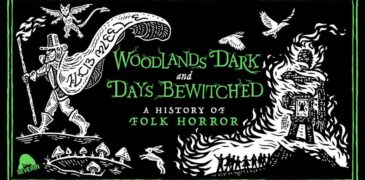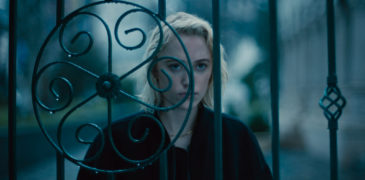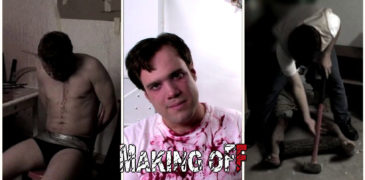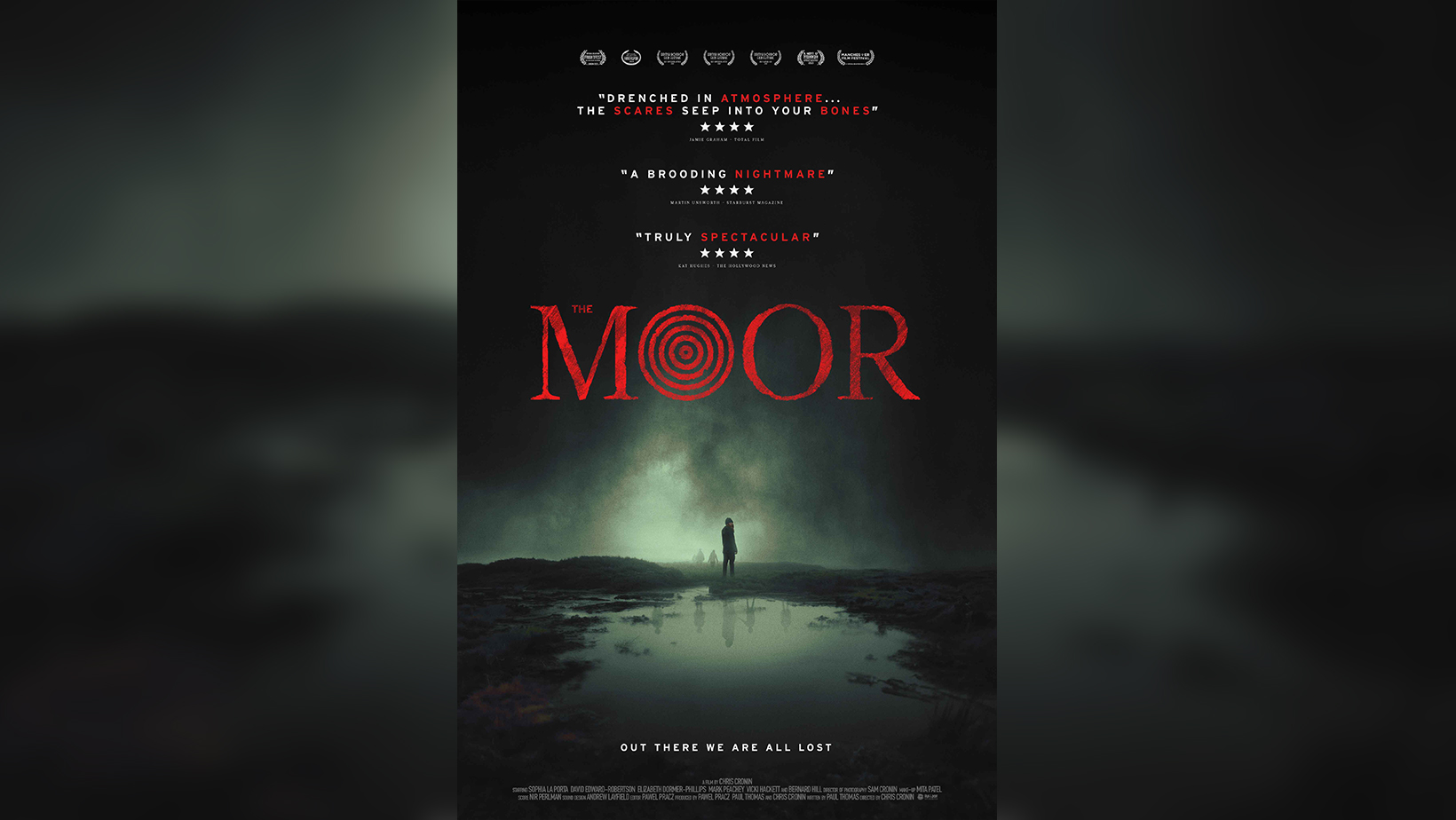
In today’s world of flashy graphics and CGI, audiences have become immune to fantastical horror, pushing some writers to create content to test our boundaries with the extreme. In The Moor (2023), Paul Thomas and director Chris Cronin take us in the opposite direction, back to a place where our hindbrains are triggered to watch the horizon for dangers felt but unseen. For those who don’t know, the moors in the UK are sweeping acres of land that are uninhabitable for humans, mainly because of the treacherous peat bogs dotting the landscape. They are often veiled by thick, stagnant fog, and it’s easy to lose one’s sense of direction because everything looks the same. The ground goes from solid dirt with outcrops of scrub brush to quicksand-like bogs with no obvious transition. Deep rifts cut through the acreage, and you’re not likely to climb back out of them if you’re exploring alone. With no villages close enough to the moors to hear your screams, you’d be swallowed up by the land within days. It’s the perfect place to dump a body.
In The Moor, we follow Claire (Sophia La Porta), who has fled her life in London after reporters descended on her, wanting her to finally tell her part of a story that began 25 years prior. As a child, she coaxed her young friend Danny (Dexter Sol Ansell) to distract a shop owner while she shoplifted candy for them. Danny never made it back to their meeting spot; he’d been kidnapped by a serial killer. Adult Claire has maintained contact with Danny’s father Bill (David Edward Robertson), who invites her to stay with him while she hides from the media in the days leading up to the kidnapper’s release from prison. When she arrives, Bill pleads with her to use her podcast to share his story, hoping that sympathetic listeners will join him in his ongoing search for his beloved son Danny, but she refuses. She’s never told anyone that she feels responsible for Danny’s disappearance, not even herself, but some part of her is desperate for her to face her guilt.

Cronin and Thomas masterfully set Claire’s devolving mental health against Bill’s impossible hope that his son is still alive, forcing her to help Bill search the moors on foot, even though she knows something is wrong with the land. Bill has hired Alex (Mark Peachy), a dowser, to narrow the search area with a pendulum held over maps, and when that proves fruitless, they bring in his psychic-medium daughter Eleanor (Elizabeth Dormer-Phillips). Together with a park ranger who knows the moors and how to navigate them (Vicki Hackett), the group step into the mist to look for signs of Danny. If they can find something in time, they might be able to stop the release of the killer, who was never prosecuted for Danny’s disappearance.
The Moor begins like a true crime documentary, with cut-out scenes of interviews with villagers who were affected by the serial killer, and the detective who is still haunted by the fact that he couldn’t find Danny. With a slow but masterful reveal of the entirety of the story, Cronin sweeps the audience into the moor, which essentially becomes the main character in the film. We’re shown through the humans exploring the moor that Claire was right, there is something wrong with the land they’re searching for, but Cronin also gives the moor the ability to communicate all on its own. Nearly stagnant fog swirls and parts to reveal feral sheep and goats that stand and stare menacingly at the human intruders, not quite daring them to continue. It’s more like they know what the fog is hiding, and they’re devilishly grinning, knowing what will happen to the search party. The moor is their wrathful God, and they enjoy the blood It spills.
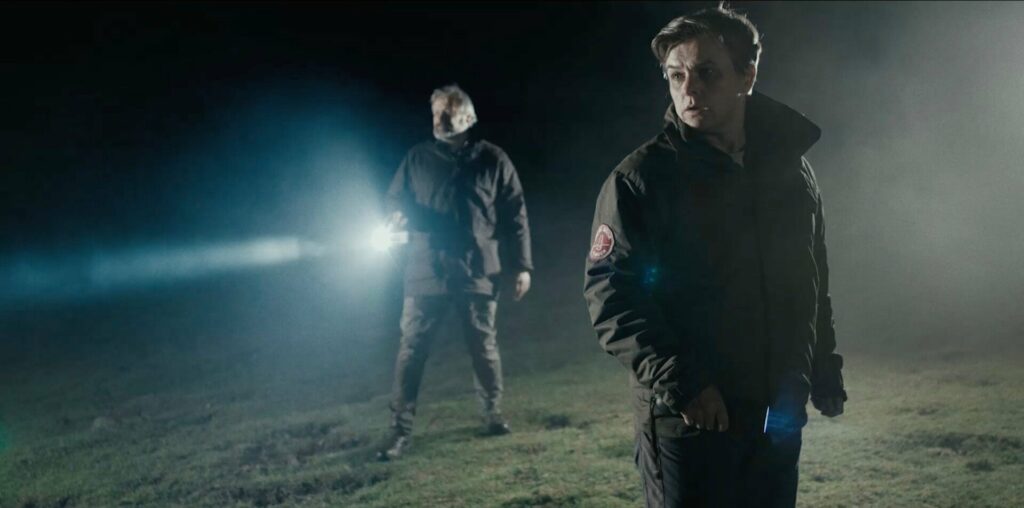
The atmospheric dread Cronin builds upon the moor is absolutely riveting, and he steers clear of jump scares in favour of slowly driving us mad, waiting for “the awful thing” to happen. We all know it’s coming, but we can’t see any further than the search party can, and we aren’t given enough information to guess what exactly the unseen evil is until we pass the three-quarter mark of the film. There are some horrific moments before the big reveal, especially when long-dead bodies emerge from the bog ala Poltergeist pool scene, but the true horror lies in the unseen thing, creeping closer, almost visible….almost…
Technically, The Moor is a beautiful work of art. It flows flawlessly, showing the audience the backstory through those interviews with the villagers and Claire’s memories, and expands like athletic lungs, gaining steady power until the climax. Ambient music is perfectly tuned at the same pace, gaining momentum throughout the film, perfectly illustrating Claire’s devolution up to her realization at the climax that she was, in fact, the person responsible for Danny’s disappearance. The cinematography captures the real nature and dangers of the moor, while also showing us the human trepidation aspect through shots like focusing on Claire’s feet at the border where pavement meets moorland. As a film, The Moor is graceful and insidious. It will lure you in and trap you, and you’ll love the creators for it.
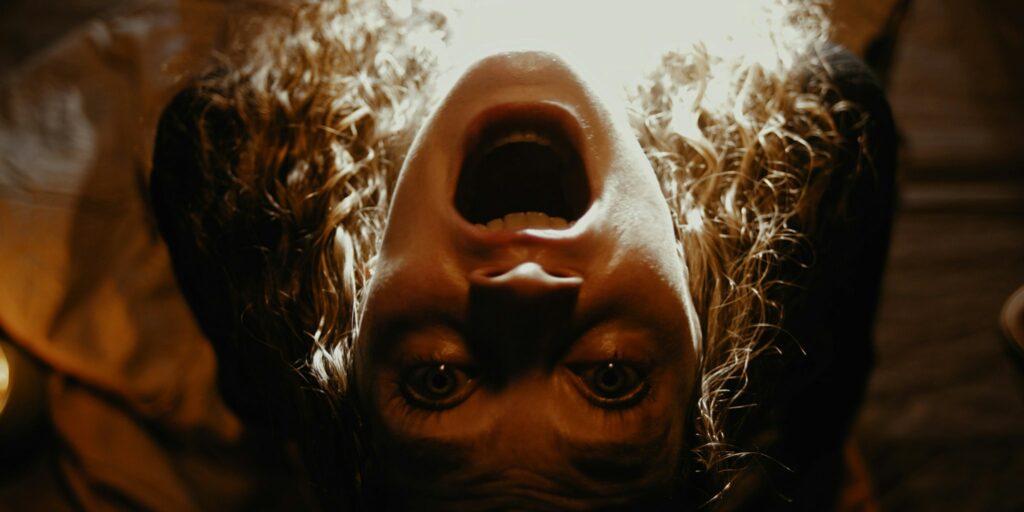
The original ending that plays before the credits is somewhat of a letdown after the explosive climax, and leaves the audience with more questions than answers. Perhaps to remedy this, there is an additional 10-minute scene part way through the credits that seems like an attempt at tying up loose ends but feels more like a rushed bandage fix inserted to appease critics. Despite this, The Moor is one of the best atmospheric horrors to come out of the UK in years. It was released in UK theatres on June 14th, and is coming to digital on July 1 via Bulldog Film Distribution.

More Film Reviews
In the not-so-distant future, death is a choice for some. Robert Holz’s first feature-length film, Restore Point (2023), is a masterpiece, brilliantly capturing the dystopian future that we all fear… Explore the rural roots, occult creeds and cultural lore that continue to shape international cinema. The folk horror genre is as diverse as the countries, cultures, and eras in which… I first saw Alejandro Jodorowsky’s surreal, bildungsroman film, Santa Sangre, in 1989 on VHS tape. Watching it was like watching a slasher about a killer with a twisted Oedipal Complex… La Petite Mort II: Nasty Tapes is a 2014 splatter horror film, written and directed by Marcel Walz with additional writing from Annika Strauss. The film is a continuation of… Chloe Okuno’s Watcher, which delighted lucky Sundance Festival-goers earlier this year, is a step forward for the horror genre and doubles as a neat entry point (for those curious) into the… Making Off (also known as Devil’s Weekend) is a 2012 French extreme found footage film, written and directed by Cédric Dupuis in his feature-length directorial debut. The film is presented…Restore Point (2023) Film review – Supreme Sci-Fi Thriller [Toronto After Dark Film Festival]
Woodlands Dark and Days Bewitched (2021) Documentary Review
Santa Sangre (1989) Film Review – The Circus of Dreams and Nightmares
La Petite Mort II: Nasty Tapes (2014) Film Review – Return to Maison de la Petite Mort
Watcher (2022) Movie Review – A Smart Fish-Out-Of-Water Paranoid Thriller
Making Off (2012) Film Review – Satirical Nastiness

Kate’s love of all things dark began as a child and deepened when she realized what being an adult meant. She was born with a pencil in her hand and loves nothing more than writing horrific stories to tantalize her inner demons. Kate lives in Hamilton, Ontario Canada with her husband and her boys, stirring up trouble wherever she can.

![Restore Point (2023) Film review – Supreme Sci-Fi Thriller [Toronto After Dark Film Festival]](https://www.grimoireofhorror.com/wp-content/uploads/2023/10/Restore-Point-2023-cover-365x180.jpg)
